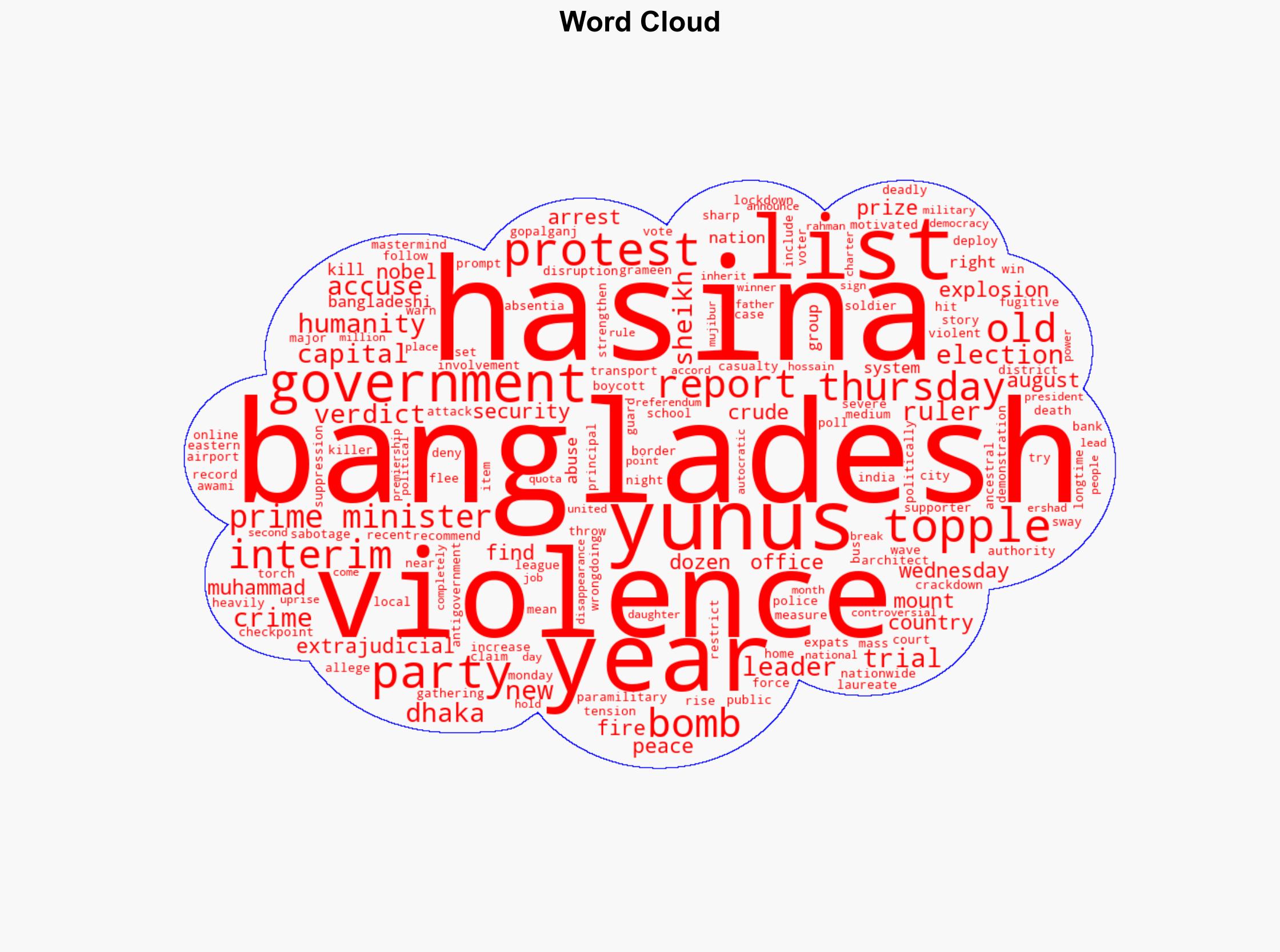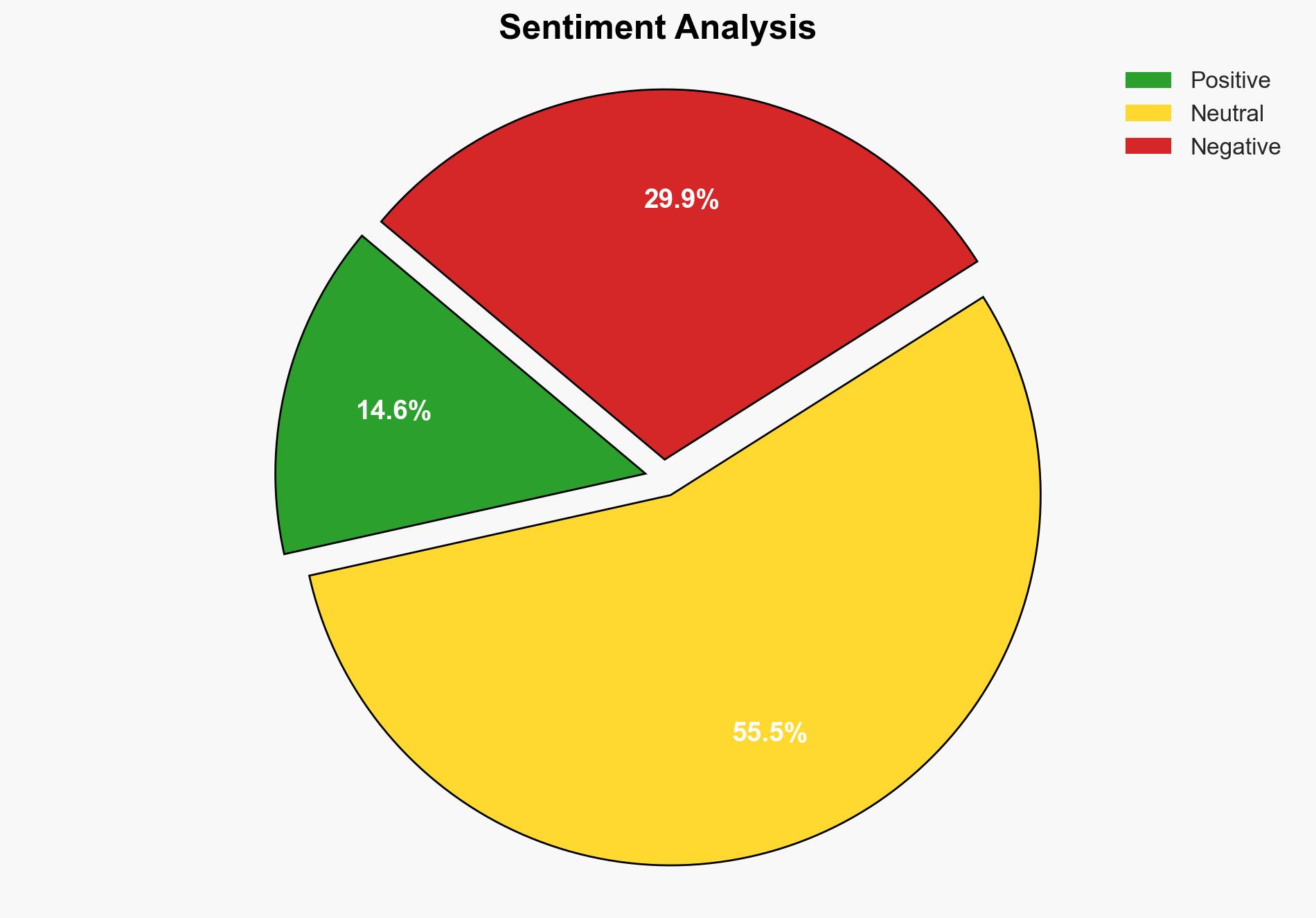Violence in Bangladesh as toppled Hasinas party protests crackdown trial – Al Jazeera English
Published on: 2025-11-14
AI-powered OSINT brief from verified open sources. Automated NLP signal extraction with human verification. See our Methodology and Why WorldWideWatchers.
Intelligence Report: Violence in Bangladesh as toppled Hasinas party protests crackdown trial – Al Jazeera English
1. BLUF (Bottom Line Up Front)
The ongoing violence in Bangladesh, following the trial and crackdown on Sheikh Hasina’s party, is likely a manifestation of deep-seated political instability and power struggles. The most supported hypothesis is that the unrest is primarily driven by political factionalism and the contestation of power. The recommended action is to closely monitor the situation for signs of escalation and to engage in diplomatic efforts to encourage dialogue between conflicting parties. Confidence Level: Moderate.
2. Competing Hypotheses
Hypothesis 1: The violence is primarily a result of political factionalism and power struggles between Sheikh Hasina’s Awami League and opposition forces, exacerbated by the recent trial and crackdown.
Hypothesis 2: The unrest is largely driven by socio-economic grievances and public dissatisfaction with government policies, which have been catalyzed by the trial and perceived injustices.
Hypothesis 1 is more likely due to the historical context of political rivalry in Bangladesh and the direct involvement of political figures and parties in the current unrest. The evidence of targeted attacks on government offices and the involvement of political supporters supports this interpretation.
3. Key Assumptions and Red Flags
Assumptions: It is assumed that the trial and crackdown are perceived as politically motivated by a significant portion of the population. It is also assumed that the violence is not yet coordinated by a single entity but rather a series of spontaneous reactions.
Red Flags: The potential for escalation if the government intensifies its crackdown or if opposition forces unify under a common agenda. Deception indicators include potential misinformation campaigns by both government and opposition to sway public opinion.
4. Implications and Strategic Risks
The continued violence poses significant risks of political destabilization, which could lead to further economic downturns and undermine investor confidence. There is a risk of international condemnation if human rights abuses are documented. The situation could escalate into broader civil unrest if not addressed through dialogue and reform.
5. Recommendations and Outlook
- Encourage diplomatic engagement between the government and opposition to de-escalate tensions.
- Monitor for signs of escalation or coordination among opposition groups.
- Best-case scenario: Peaceful resolution through dialogue and reform.
- Worst-case scenario: Escalation into widespread civil unrest and international intervention.
- Most-likely scenario: Continued sporadic violence with periodic government crackdowns.
6. Key Individuals and Entities
Sheikh Hasina, Muhammad Yunus, Awami League, opposition parties.
7. Thematic Tags
Structured Analytic Techniques Applied
- Cognitive Bias Stress Test: Expose and correct potential biases in assessments through red-teaming and structured challenge.
- Bayesian Scenario Modeling: Use probabilistic forecasting for conflict trajectories or escalation likelihood.
- Network Influence Mapping: Map relationships between state and non-state actors for impact estimation.
Explore more:
National Security Threats Briefs ·
Daily Summary ·
Support us
·





